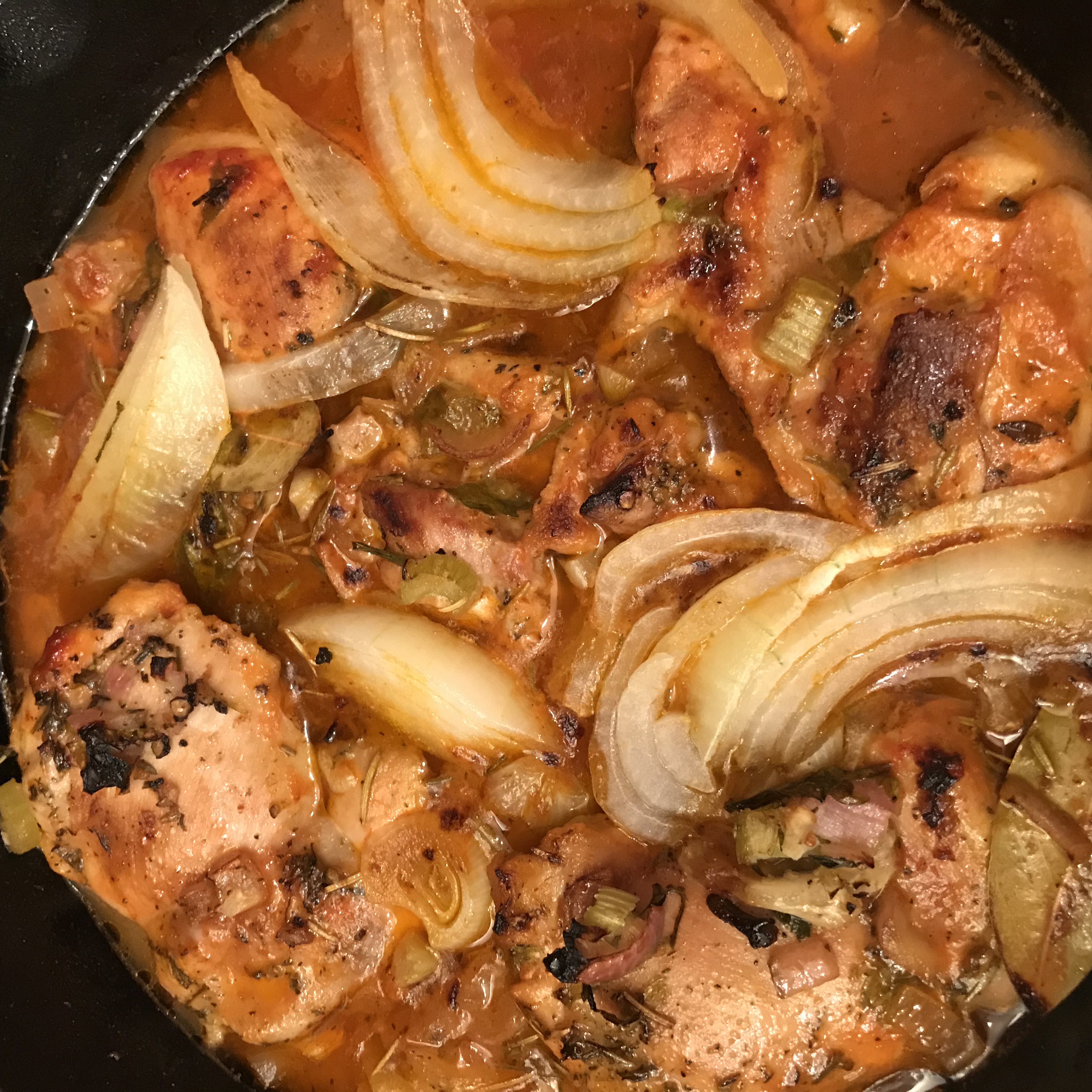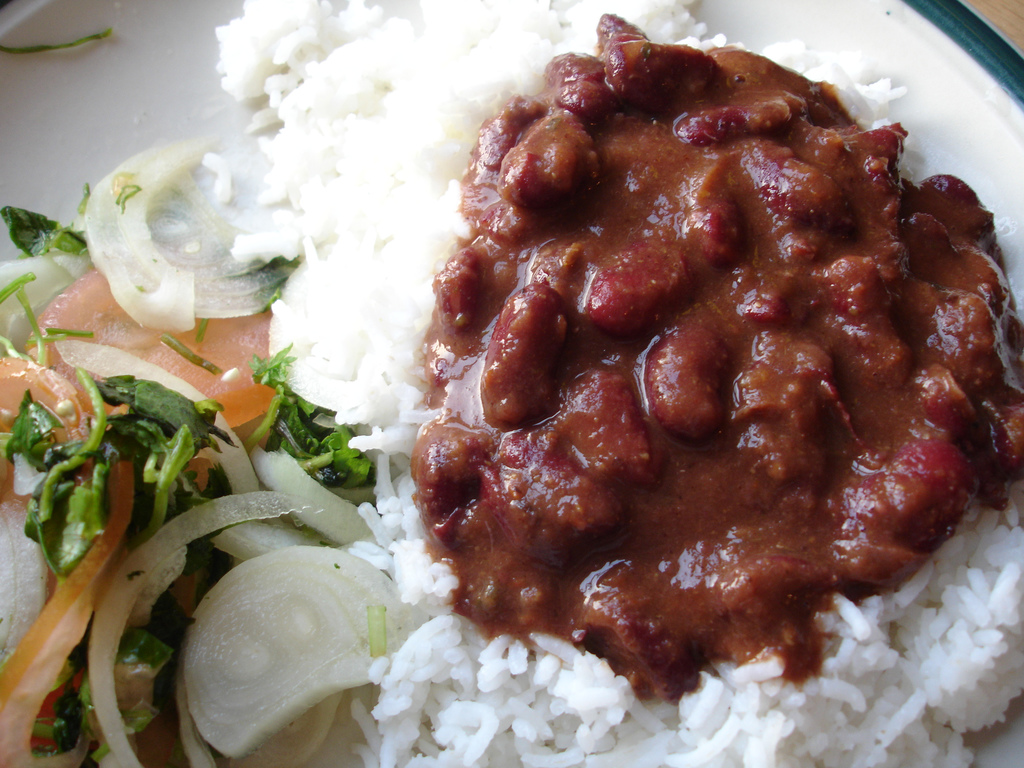|
Pikliz
Pikliz is a condiment in Haitian cuisine of pickled cabbage, carrots, bell peppers and Scotch bonnet peppers. It is often seasoned with garlic and onion and pickled in white vinegar. The spicy dish is very commonly served on the table along with other dishes to enhance the flavor. It is useful for cutting through the greasiness of fried foods such as ''griot'' (fried pork), ''tassot'' (fried beef), or '' bannann peze'' (fried plantains) and enhancing rice and beans. The name of the dish itself may be based on the French word ''piquer'' which means 'to sting'. It has traditionally been produced at the household level but it is increasingly produced industrially as the number of Haitians living abroad also increases. See also * Curtido * Kimchi ''Kimchi'' (; ko, 김치, gimchi, ), is a traditional Korean side dish of salted and fermented vegetables, such as napa cabbage and Korean radish. A wide selection of seasonings are used, including '' gochugaru'' (Korean ... [...More Info...] [...Related Items...] OR: [Wikipedia] [Google] [Baidu] |
Haitian Cuisine
Haitian cuisine consists of cooking traditions and practices from Haiti. It is a Creole cuisine that originates from a blend of several culinary styles that populated the western portion of the island of Hispaniola, namely the African, French, indigenous Taíno, Spanish and Arab influence. Haitian cuisine is comparable to that of "criollo" (Spanish for 'creole') cooking and similar to the rest of the Latin Caribbean, but differs in several ways from its regional counterparts. The flavors are of a bold and spicy nature that demonstrate African and French influences, with notable derivatives coming from native Taíno and Spanish techniques. Levantine influences have made their way into the mainstream culture, due to an Arab migration over the years. Years of adaptation have led to these cuisines to merge into Haitian cuisine. History Pre-colonial cuisine Haiti was one of many Caribbean islands inhabited by the Taíno natives, speakers of an Arawakan language called Taíno. The ... [...More Info...] [...Related Items...] OR: [Wikipedia] [Google] [Baidu] |
Haiti
Haiti (; ht, Ayiti ; French: ), officially the Republic of Haiti (); ) and formerly known as Hayti, is a country located on the island of Hispaniola in the Greater Antilles archipelago of the Caribbean Sea, east of Cuba and Jamaica, and south of The Bahamas and the Turks and Caicos Islands. It occupies the western three-eighths of the island which it shares with the Dominican Republic. To its south-west lies the small Navassa Island, which is claimed by Haiti but is disputed as a United States territory under federal administration."Haiti" ''Encyclopædia Britannica''. Haiti is in size, the third largest country in the Caribbean by area, and has an estimated population of 11.4 million, making it the most populous country in the Caribb ... [...More Info...] [...Related Items...] OR: [Wikipedia] [Google] [Baidu] |
Condiment
A condiment is a preparation that is added to food, typically after cooking, to impart a specific Flavoring, flavor, to enhance the flavor, or to complement the dish. A table condiment or table sauce is more specifically a condiment that is served separately from the food and is added to taste by the diner. Condiments are sometimes added prior to serving, for example, in a sandwich made with ketchup, mustard (condiment), mustard or mayonnaise. Some condiments are used during cooking to add flavor or texture: barbecue sauce, compound butter, Teriyaki#Teriyaki sauce, teriyaki sauce, soy sauce, Marmite and sour cream are examples. Many condiments, such as mustard or ketchup, are available in Packet (container), single-serving packets, commonly when supplied with take-out or fast food meals. Definition The exact definition of a condiment varies. Some definitions encompass Spice, spices and Herb, herbs, including salt and pepper, using the term interchangeably with ''seasoning''. O ... [...More Info...] [...Related Items...] OR: [Wikipedia] [Google] [Baidu] |
Cabbage
Cabbage, comprising several cultivars of ''Brassica oleracea'', is a leafy green, red (purple), or white (pale green) biennial plant grown as an annual vegetable crop for its dense-leaved heads. It is descended from the wild cabbage ( ''B. oleracea'' var. ''oleracea''), and belongs to the "cole crops" or brassicas, meaning it is closely related to broccoli and cauliflower (var. ''botrytis''); Brussels sprouts (var. ''gemmifera''); and Savoy cabbage (var. ''sabauda''). A cabbage generally weighs between . Smooth-leafed, firm-headed green cabbages are the most common, with smooth-leafed purple cabbages and crinkle-leafed savoy cabbages of both colours being rarer. Under conditions of long sunny days, such as those found at high northern latitudes in summer, cabbages can grow quite large. , the heaviest cabbage was . Cabbage heads are generally picked during the first year of the plant's life cycle, but plants intended for seed are allowed to grow a second year and must be ... [...More Info...] [...Related Items...] OR: [Wikipedia] [Google] [Baidu] |
Carrot
The carrot ('' Daucus carota'' subsp. ''sativus'') is a root vegetable, typically orange in color, though purple, black, red, white, and yellow cultivars exist, all of which are domesticated forms of the wild carrot, ''Daucus carota'', native to Europe and Southwestern Asia. The plant probably originated in Persia and was originally cultivated for its leaves and seeds. The most commonly eaten part of the plant is the taproot, although the stems and leaves are also eaten. The domestic carrot has been selectively bred for its enlarged, more palatable, less woody-textured taproot. The carrot is a biennial plant in the umbellifer family, Apiaceae. At first, it grows a rosette of leaves while building up the enlarged taproot. Fast-growing cultivars mature within three months (90 days) of sowing the seed, while slower-maturing cultivars need a month longer (120 days). The roots contain high quantities of alpha- and beta-carotene, and are a good source of vitamin A, vitamin K, ... [...More Info...] [...Related Items...] OR: [Wikipedia] [Google] [Baidu] |
Bell Pepper
The bell pepper (also known as paprika, sweet pepper, pepper, or capsicum ) is the fruit of plants in the Grossum Group of the species ''Capsicum annuum''. Cultivars of the plant produce fruits in different colors, including red, yellow, orange, green, white, chocolate, candy cane striped, and purple. Bell peppers are sometimes grouped with less pungent chili varieties as "sweet peppers". While they are fruits—botanically classified as berries—they are commonly used as a vegetable ingredient or side dish. Other varieties of the genus ''Capsicum'' are categorized as ''chili peppers'' when they are cultivated for their pungency, including some varieties of ''Capsicum annuum''. Peppers are native to Mexico, Central America, and northern South America. Pepper seeds were imported to Spain in 1493 and then spread through Europe and Asia. The mild bell pepper cultivar was developed in the 1920s, in Szeged, Hungary. Preferred growing conditions for bell peppers include warm, mois ... [...More Info...] [...Related Items...] OR: [Wikipedia] [Google] [Baidu] |
Scotch Bonnet
Scotch bonnet (also known as Bonney peppers, or Caribbean red peppers) is a variety of chili pepper named for its supposed resemblance to a Scottish tam o' shanter bonnet. It is ubiquitous in West Africa as well as the Caribbean. Like the closely related habanero, Scotch bonnets have a heat rating of 100,000–350,000 Scoville units. For comparison, most jalapeño peppers have a heat rating of 2,500 to 8,000 on the Scoville scale. However, completely sweet varieties of Scotch bonnet called cachucha peppers are grown on some of the Caribbean islands. Scotch bonnets are used to flavor many dishes and cuisines worldwide and are often used in hot sauces and condiments. The Scotch bonnet has a sweeter flavor and stouter shape, distinct from its habanero relative with which it is often confused, and gives jerk dishes (pork/chicken) and other Caribbean dishes their unique flavor. Scotch bonnets are mostly used in Sri Lankan, Maldivian, West African, Antiguan, Kittitian/Nevisian, ... [...More Info...] [...Related Items...] OR: [Wikipedia] [Google] [Baidu] |
Garlic
Garlic (''Allium sativum'') is a species of bulbous flowering plant in the genus ''Allium''. Its close relatives include the onion, shallot, leek, chive, Allium fistulosum, Welsh onion and Allium chinense, Chinese onion. It is native to South Asia, Central Asia and northeastern Iran and has long been used as a seasoning worldwide, with a history of several thousand years of human consumption and use. It was known to ancient Egyptians and has been used as both a food flavoring and a traditional medicine. China produces 76% of the world's supply of garlic. Etymology The word ''garlic'' derives from Old English, ''garlēac'', meaning ''gar'' (spear) and leek, as a 'spear-shaped leek'. Description ''Allium sativum'' is a perennial flowering plant growing from a bulb. It has a tall, erect flowering stem that grows up to . The leaf blade is flat, linear, solid, and approximately wide, with an acute apex. The plant may produce pink to purple flowers from July to September in the Nort ... [...More Info...] [...Related Items...] OR: [Wikipedia] [Google] [Baidu] |
Onion
An onion (''Allium cepa'' L., from Latin ''cepa'' meaning "onion"), also known as the bulb onion or common onion, is a vegetable that is the most widely cultivated species of the genus ''Allium''. The shallot is a botanical variety of the onion which was classified as a separate species until 2010. Its close relatives include garlic, scallion, leek, and chive. This genus also contains several other species variously referred to as onions and cultivated for food, such as the Japanese bunching onion (''Allium fistulosum''), the tree onion (''A.'' × ''proliferum''), and the Canada onion (''Allium canadense''). The name ''wild onion'' is applied to a number of ''Allium'' species, but ''A. cepa'' is exclusively known from cultivation. Its ancestral wild original form is not known, although escapes from cultivation have become established in some regions. The onion is most frequently a biennial or a perennial plant, but is usually treated as an annual and harvested in its f ... [...More Info...] [...Related Items...] OR: [Wikipedia] [Google] [Baidu] |
White Vinegar
Vinegar is an aqueous solution of acetic acid and trace compounds that may include flavorings. Vinegar typically contains 5–8% acetic acid by volume. Usually, the acetic acid is produced by a double fermentation, converting simple sugars to ethanol using yeast, and ethanol to acetic acid by acetic acid bacteria. Many types of vinegar are available, depending on source materials. It is now mainly used in the culinary arts as a flavorful, acidic cooking ingredient, or in pickling. Various types are used as condiments or garnishes, including balsamic vinegar and malt vinegar. As the most easily manufactured mild acid, it has a wide variety of industrial and domestic uses, including use as a household cleaner. Etymology The word "vinegar" arrived in Middle English from Old French (''vyn egre''; sour wine), which in turn derives from Latin: ''vinum'' (wine) + ''acer'' (sour). Chemistry The conversion of ethanol (CH3CH2OH) and oxygen (O2) to acetic acid (CH3COOH) takes place b ... [...More Info...] [...Related Items...] OR: [Wikipedia] [Google] [Baidu] |
Fried Plantain
Fried plantain is a dish cooked wherever plantains grow, from West Africa to East Africa as well as Central America, the tropical region of northern South America and the Caribbean countries like Haiti to Cuba and in many parts of Southeast Asia, where fried snacks are widely popular. In Indonesia it is called ''gorengan''. It is called ''alloco'' in Côte d'Ivoire and ''dodo'' in Western Nigeria, otherwise known as simply fried plantain in other parts of Nigeria. ''Kelewele'' is a fried spicy plantain or can be fried as a side dish for Red Red (African stewed black-eyed peas) and fish stew in Ghana. Fried plantain is also eaten in some countries in South America or the Caribbean where African influence is present. For example, in the Dominican Republic, Cuba and Puerto Rico, it is common to cut plantains in slices, fry them until they are yellow, smash them between two plates and fry them again. This is also a common dish in Haiti, referred to as ''bannann peze'', and througho ... [...More Info...] [...Related Items...] OR: [Wikipedia] [Google] [Baidu] |
Rice And Beans
Rice and beans, or beans and rice, is a category of dishes from many cultures around the world, whereby the staple foods of rice and beans are combined in some manner. The grain and legume combination provides several important nutrients and many calories, and both foods are widely available. The beans are usually seasoned, while the rice may be plain or seasoned. The two components may be mixed together, separated on the plate, or served separately. Description The dish usually consists of white or brown rice accompanied by cooked brown, red or black dry beans (typically '' Phaseolus vulgaris'' or ''Vigna unguiculata'') and seasoned in various ways. This dish is also commonly served with sides of stewed chicken, pork, beef, potato salad, boiled potatoes, and many other sides from many different cultures. In many areas, beans and rice are often served side by side rather than combined. Either way, they may be considered a meal, frequently with a topping of meat or chicken. Meat ... [...More Info...] [...Related Items...] OR: [Wikipedia] [Google] [Baidu] |








